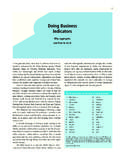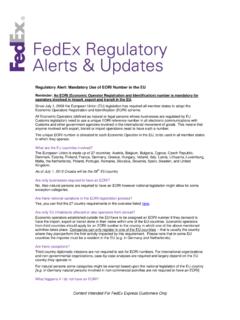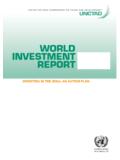Transcription of Basel AML Index 14 08 2017 Report AML Final
1 Steinenring 60 | 4051 Basel , Switzerland | +41 61 205 55 11 | Basel AML Index 2017 Report Basel Institute on Governance | 16 August 2017 Basel INSTITUTE ON GOVERNANCE Table of contents 1 Introduction 1 2 What does the Basel AML Index measure? 2 3 Basel AML Index 2017 Scores and Rankings (from highest to lowest risk) 3 4 Results & Findings 1 High-risk countries 1 Low-risk countries 3 Largest improvements and deteriorations 4 Regional results 6 Notes on the findings 8 5 Methodology 9 Methodological approach 9 How is the overall score calculated? 10 Selection of data 10 Scaling 11 Weighting/Aggregation 11 Missing data/imputation of missing data 12 Data validation 12 6 Annual Review 2017 13 General methodological approach and selection of indicators 13 Update on the new FATF Mutual Evaluation Reports (4th Round) 13 US International Narcotics and Control Strategy Report (INCSR) 15 Replacing World Bank (WB) Doing Business - Extent of Disclosure Index with WB Extent of Corporate Transparency Index 16 Terrorism Financing Risks 16 Risk Levels 17 Statistical Testing 18 Discussion on Final ranking scores 18 7 Expert Edition 18 Why use the Expert Edition?
2 19 Expert Edition Plus 20 8 About the Basel Institute on Governance 20 9 Annex 1 1 Overview of risk indicators including weighting 1 Basel INSTITUTE ON GOVERNANCE 1 1 Introduction This Report is issued on the occasion of the launch of the sixth edition of the Basel Anti-Money Laundering (AML) Index , which has been published by the Basel Institute on Governance ( Basel Institute) since 2012. To date, the Basel AML Index remains the only Index issued by an independent, not-for-profit organisation ranking countries according to their risk of money laundering and terrorist financing. The Basel AML Index is used by the private sector as an established AML country risk rating tool for compliance purposes, and in the public sector, by NGOs and academia for research and policy measures. The Basel AML Index 2017 edition covers 146 countries and provides risk ratings based on the quality of a country s framework for AML and countering terrorism financing (AML/CFT) and related factors such as perceived levels of corruption, financial sector standards and public transparency.
3 The results of the Basel AML Index , which are presented in Chapter 3, are derived from 14 indicators using publicly available sources such as the Financial Action Task Force (FATF), Transparency International, the World Bank and the World Economic Forum. The scores are aggregated as a composite Index using a qualitative and expert-based assessment. An analysis of the results of the 2017 edition of the Basel AML Index is presented in Chapter 4. It is important to read these results chapters in conjunction with Chapters 2 and 5, which provide a detailed account of the scope of what the AML Index can and cannot measure, and the methodology used to calculate the overall score of the Basel AML Index . Without this background, results of composite indices may easily be misunderstood or misrepresented, and this may have unwanted consequences for any policy or compliance decision that is taken as a result of using the AML Index .
4 The Basel Institute has conducted extensive research in calculating the Final results following academic best practices and has its methodology reviewed and validated by an international and independent panel of peer reviewers. The committee also checks that the rating is accurate, plausible and continues to capture the latest development in the area of AML/CFT risks. A Report from the 2016 peer review exercise is included in this Report in Chapter 6. The Basel AML Index is issued in two editions and with extra services on demand: The Public Edition offers the annual ranking of countries according to their risk profiles and is available free of charge. The subscription based Expert Edition provides a more comprehensive data set and allows for a selection of sub-indicator of the Index . The Expert Edition is also periodically updated, covers about 50 countries more than the Public Edition, and includes sanctions lists.
5 With these additional features, it can serve as a sophisticated country risk assessment tool for regulatory purposes, particularly for compliance officers, and caters to users diverse needs in relation to different compliance and regulatory requirements. The Expert Edition is also offered free of charge for public, academic and non-profit organisations; commercial enterprises are charged an annual fee starting at CHF 2000 depending on user intensity. See chapter 7 for more details about the Expert Edition and Expert Edition Plus. Finally, the Basel Institute offers additional services on demand. Since 2017, we offer an in-depth survey and analysis of all FATF MERs, including from a comparative perspective. Also, if so desired, we can create a tailor-made AML Index to serve specific needs of a customer whereby a different selection of underlying indices and/or different weighting may be applied.
6 Basel INSTITUTE ON GOVERNANCE 2 The Basel Institute continues to actively facilitate the exchange of knowledge on the challenges of AML/CFT risk rating. We, therefore, encourage comments and feedback on the Basel AML Index , as we strive to advance the use of AML country risk ratings for both research and compliance purposes. 2 What does the Basel AML Index measure? The Basel AML Index measures the risk of money laundering and terrorist financing of countries based on publicly available sources. A total of 14 indicators dealing with AML/CFT regulations, corruption, financial standards, political disclosure and the rule of law are aggregated into one overall risk score. By combining these various data sources, the overall risk score represents a holistic assessment addressing structural as well as functional elements in the AML/CFT framework.
7 It is important to note and understand that As there are no reliable quantitative data on money laundering available, the Basel AML Index does not measure the actual existence of money laundering activity or amount of illicit financial money within a country but is designed to indicate the risk level, the vulnerabilities of money laundering and terrorist financing within a country. Measuring the actual existence of ML or TF activity would require reliable quantitative data on these phenomena, and this is not available. The Basel AML Index ranks countries based on the overall score and provides data that is useful for comparative purposes. However, it should be pointed out that the primary objective is not to rank countries in comparison to each other. Rather, the Basel AML Index seeks to provide an overall picture of a country s risk level and to serve as a solid starting point for examining progress over time.
8 Basel INSTITUTE ON GOVERNANCE 3 3 Basel AML Index 2017 Scores and Rankings (from highest to lowest risk) 1 Iran 2 Afghanistan 3 Guinea-Bissau 4 Tajikistan 5 Laos 6 Mozambique 7 Mali 8 Uganda 9 Cambodia 10 Tanzania 11 Kenya 12 Liberia 13 Myanmar 14 Nepal 15 Burkina Faso 16 Paraguay 17 Haiti 18 Vietnam 19 Zambia 20 Sao Tome And Principe 21 Niger 22 Benin 23 Bolivia 24 Lesotho 25 Sri Lanka 26 Sierra Leone 27 Lebanon 28 Vanuatu 29 Sudan 30 Panama 31 Cape Verde 32 Mauritania 33 Nigeria 34 Ghana 35 Trinidad And Tobago 36 Zimbabwe 37 Yemen 38 Marshall Islands 39 Gambia 40 Rwanda 41 Argentina 42 Dominican Republic 43 Turkey 44 Thailand 45 Nicaragua 46 Pakistan 47 Jamaica 48 Namibia 49 Angola 50 Venezuela 51 China 52 Ukraine 53 Cote D'ivoire 54 Algeria 55 Timor-Leste (East Timor)
9 56 Kazakhstan 57 Morocco 58 Ecuador 59 Tunisia 60 Kyrgyzstan 61 Indonesia 62 Senegal 63 Guyana 64 Russia 65 Philippines 66 Brazil 67 Guatemala 68 Papua New Guinea 69 Mongolia 70 Malaysia 71 Uzbekistan 72 United Arab Emirates 73 Grenada 74 Botswana 75 Honduras 76 St. Vincent And The Grenadines 77 Costa Rica 78 Mauritius 79 Bosnia-Herzegovina 80 Malawi 81 Bahrain 82 Bangladesh 83 Serbia 84 Mexico 85 Albania 86 St. Lucia 87 Egypt 88 India 89 Hong Kong Sar, China 90 Kuwait 91 El Salvador 92 Moldova 93 Saudi Arabia 94 Hungary 95 Italy 96 Luxembourg 97 Georgia 98 Japan 99 South Africa 100 Peru 101 Uruguay 102 Switzerland 103 Canada 104 Dominica 105 Greece 106 Macedonia 107 Qatar 108 Austria 109 Chile 110 Netherlands 111 Jordan 112 Portugal 113 Korea, South 114 Spain 115 Cyprus 116 United States 117 Singapore 118 United Kingdom 119 Azerbaijan 120 Slovakia 121 Germany 122 Montenegro 123 Belgium 124 Ireland 125 Colombia 126 Czech Republic 127 Norway 128 France 129 Romania 130 Poland 131 Australia 132 Iceland 133 Latvia 134 Armenia 135 Malta 136 Taiwan.
10 China 137 Israel 138 Sweden 139 Croatia 140 Denmark 141 Slovenia 142 New Zealand 143 Bulgaria 144 Estonia 145 Lithuania 146 Finland Basel INSTITUTE ON GOVERNANCE 1 4 Results & Findings High-risk countries The top 10 high-risk countries in the 2017 Basel AML Index are Iran, Afghanistan, Guinea-Bissau, Tajikistan, Laos, Mozambique, Mali, Uganda, Cambodia, Tanzania (see Table 1). In comparison to the previous edition, Sudan and Myanmar, which have previously been among the 10 highest risk countries in the Index , have seen certain improvements in their scores ( and respectively) and are not listed in the top ten risk countries this year. In contrast, Tanzania and Laos deteriorated in their ranking and are in this list of top 10 high-risk countries for the first time since the Basel AML Index is published.




